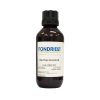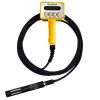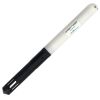Bright Dyes Rhodamine WT Dye
Features
- Preferred, high strength formulations for medium to large scale visual and fluoremetric studies
- NSF Standard 60 Certification for use in or around potable water sources
- Also used to calibrate many YSI 6-Series and EXO optical sensors
- Expedited repair and warranty service
- Lifetime technical support
- More
Overview
Bright Dyes act as a coloring label on each drop of water. As that water or liquid travels, it can be identified at each point on its travel until it reaches extreme dilution. It may be detected visually, by ultraviolet light and by appropriate fluorometric equipment. The dyes selectively absorb light in the visible range of the spectrum. They are fluorescent because, upon absorbing light, they instantly emit light at a longer wavelength than the light absorbed. This emitted (fluorescent) light goes out in all directions. Most common fluorescent tracers are compounds that absorb green light and emit red fluorescent light.
Absorption Resistant
FWT red dye is resistant to absorption on most suspended matter in fresh and salt water. Compared to Bright Dyes FLT Yellow/Green products, FWT Red is significantly more resistant to degradation by sunlight and, when used in fluorometry, stands out much more clearly against background fluorescence.
In The News
Wave-Powered Buoy Deployed in Puget Sound
While the development of solar-powered monitoring systems has improved access to real-time environmental data, solar power is still limited by low light conditions, such as poor weather, nighttime, or high-latitude environments. To supplement these incumbent power solutions at sea, Ocean Motion Technologies has developed a small-scale ocean wave energy system that can be directly integrated with existing data buoy platforms. Not only does wave energy supplement solar power during periods when the buoys are limited by light availability, but it also allows data buoys to perform beyond their current power capacities.
Read MoreLong-Term Monitoring in the Chautauqua Lake Watershed
With a widely developed shoreline, Chautauqua Lake experiences influxes of non-point source pollution that have historically impacted the health of the lake. The Chautauqua Lake Association (CLA) has been monitoring the lake for over two decades, reporting on changes that have occurred over the years. A pair of local lake advocates, Jane and Doug Conroe, have lived on the lake for over 40 years and have played an important role in establishing monitoring programs and facilitating consistent data collection throughout the watershed. Doug has been involved with the Chautauqua Lake Association (CLA) since the pair moved to the area in 1980, and is currently serving as the Executive Director.
Read MoreNo Red Herrings: Data Driving the Largest Salt Marsh Restoration in the NE USA
The Herring River system encompasses around 1,000 acres in the Towns of Wellfleet and Truro, Massachusetts. In 1909, the Chequessett Neck Road dike was built at the river’s mouth, drastically limiting tidal flow. Today, it’s one of the most restricted estuaries in the northeastern United States. As a result, the area has suffered environmental decline, including poor water quality, hypoxia, lower pH, and salt marsh degradation. In 2023, the Town of Wellfleet received $14.7 million from NOAA’s Office of Habitat Conservation to fund the Herring River Restoration Project (HRRP). Francesco Peri, President and CEO at Charybdis Group LLC, uses a network of NexSens data loggers to monitor water level and water quality on the Herring River.
Read More














